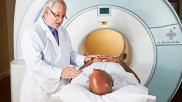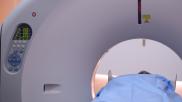| Today's News and Trends | The World Molecular Imaging Society, American College of Radiology, Society of Nuclear Medicine and Molecular Imaging and members of the National Oncologic PET Registry (NOPR) Working Group issued a statement Friday, June 8, urging CMS to reconsider its decision to decline coverage for PET imaging with sodium fluoride (NaF) for Medicare patients with metastatic cancer. The World Molecular Imaging Society, American College of Radiology, Society of Nuclear Medicine and Molecular Imaging and members of the National Oncologic PET Registry (NOPR) Working Group issued a statement Friday, June 8, urging CMS to reconsider its decision to decline coverage for PET imaging with sodium fluoride (NaF) for Medicare patients with metastatic cancer. | | |
| Referring patients to a panel of thoracic experts immediately after initial diagnostic workup reduces wait times for the diagnosis and treatment of lung cancer, according to research out of the Health Sciences Centre in St. John’s, Newfoundland, Canada. Referring patients to a panel of thoracic experts immediately after initial diagnostic workup reduces wait times for the diagnosis and treatment of lung cancer, according to research out of the Health Sciences Centre in St. John’s, Newfoundland, Canada. | | |
| Practices across the U.S. are increasingly relying on self-reported data from patients to measure quality of care, and research out of the Netherlands has found women with breast cancer are able to report overwhelmingly accurate information about treatment up to a year and a half after surgery. Practices across the U.S. are increasingly relying on self-reported data from patients to measure quality of care, and research out of the Netherlands has found women with breast cancer are able to report overwhelmingly accurate information about treatment up to a year and a half after surgery. | | |
| Calculating a patient’s body fat percentage and body mass index (BMI) can help imaging providers determine whether or not to use oral contrast material before abdominopelvic CT exams, according to a new study published in the American Journal of Roentgenology. Calculating a patient’s body fat percentage and body mass index (BMI) can help imaging providers determine whether or not to use oral contrast material before abdominopelvic CT exams, according to a new study published in the American Journal of Roentgenology. | | |
| Turning to mobile health for chemotherapy aftercare could relieve a bulk of negative chemo side effects while educating colorectal cancer patients about their illness and future options, researchers wrote this month in Clinical Colorectal Cancer. Turning to mobile health for chemotherapy aftercare could relieve a bulk of negative chemo side effects while educating colorectal cancer patients about their illness and future options, researchers wrote this month in Clinical Colorectal Cancer. | | |
| The American Society of Neuroradiology (ASNR) announced that Peter Chang, MD, a neuroradiology fellow at the University of California San Francisco, has received the Cornelius G. Dyke Memorial Award for his recent research involving deep learning technologies. The American Society of Neuroradiology (ASNR) announced that Peter Chang, MD, a neuroradiology fellow at the University of California San Francisco, has received the Cornelius G. Dyke Memorial Award for his recent research involving deep learning technologies. | | |
| Strategic Radiology has hired John Outlaw, CHC, as the company’s vice president of compliance. Strategic Radiology has hired John Outlaw, CHC, as the company’s vice president of compliance. | | |
| A magnetic metal “seed,” no larger than a grain of rice and developed by scientists at University College London, has the ability to rapidly kill cancer cells and destroy deadly tumors within 10 minutes, the Telegraph reported this week. A magnetic metal “seed,” no larger than a grain of rice and developed by scientists at University College London, has the ability to rapidly kill cancer cells and destroy deadly tumors within 10 minutes, the Telegraph reported this week. | | |
| Adults have spent plenty of time worrying about how easily children can lose focus—what with so many distractions thrown at them throughout the day. But one imaging center is hoping such a distraction could help children get through CT scans without excessive anxiety or claustrophobia. Adults have spent plenty of time worrying about how easily children can lose focus—what with so many distractions thrown at them throughout the day. But one imaging center is hoping such a distraction could help children get through CT scans without excessive anxiety or claustrophobia. | | |
| |
|
| ![]() | |
|











